1. Overview
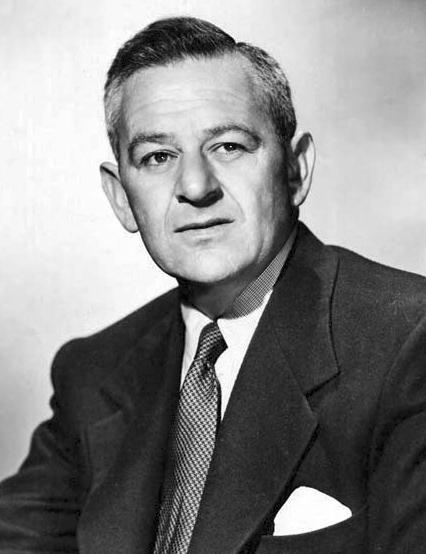
William Wyler (born Willi Wylerˈvɪli ˈvi:lɐGerman; July 1, 1902 - July 27, 1981) was a German-born American film director and film producer. Renowned for his prolific output across numerous genres over five decades, Wyler became one of Hollywood's most acclaimed and influential filmmakers. He holds the record for the most nominations for the Academy Award for Best Director, with twelve, winning three times for Mrs. Miniver (1942), The Best Years of Our Lives (1946), and Ben-Hur (1959), all of which also won the Best Picture.
Wyler was known for his meticulous and perfectionist approach to filmmaking, earning him the nickname "40-take Wyler" due to his insistence on numerous retakes to achieve the desired nuance in performances. He was also a pioneer in the use of deep focus cinematography, collaborating with cinematographer Gregg Toland to create visually complex and immersive scenes. His exceptional ability to guide actors to critically acclaimed and Oscar-winning performances is unparalleled, with fourteen actors winning Academy Awards and thirty-six receiving nominations under his direction.
His work often adapted classic literary works, transforming them into commercial and critical successes. Wyler's films frequently explored themes of social commentary and human resilience, particularly evident in his post-World War II works that addressed the struggles of returning veterans. He also served as a major in the United States Army Air Forces during World War II, directing combat documentaries that captured the realities of war at great personal risk. For his significant contributions to cinema, Wyler was honored with the Irving G. Thalberg Memorial Award, the Directors Guild of America Lifetime Achievement Award, and the American Film Institute Life Achievement Award.
2. Early life
William Wyler's formative years were marked by a European upbringing and a familial connection that would eventually lead him to the burgeoning American film industry.
2.1. Birth and family
Wyler was born Willi Wyler on July 1, 1902, in Mulhouse, Alsace-Lorraine, which was then part of the German Empire (now France). He came from a Jewish family; his father, Leopold Wyler, was a Swiss-born traveling salesman who later became a successful haberdasher in Mulhouse. His mother, Melanie Auerbach, was German-born and a cousin of Carl Laemmle, the founder of Universal Pictures. Both his parents were Jewish.
2.2. Childhood and education
During his childhood, Wyler attended several schools and gained a reputation as "something of a hellraiser," often being expelled for misbehavior. Despite his rebellious nature, his mother actively exposed him and his older brother, Robert Wyler, to arts and culture, taking them to concerts, opera, and the theatre, as well as the early cinema. At home, his family and friends would sometimes stage amateur theatricals for their own enjoyment, fostering an early appreciation for performance and storytelling. He also studied music in Paris, but eventually gave up on it.
2.3. Immigration to the United States
Wyler initially showed little interest in inheriting the family haberdashery business. After World War I, he spent a "dismal year" working in Paris, selling shirts and ties at a store called 100.000 Chemises, often wandering the Pigalle district due to his poverty. Recognizing his disinterest in the family trade, his mother, Melanie, contacted her distant cousin, Carl Laemmle, who was known for recruiting promising young men from Europe to work in America.
In 1921, Wyler, traveling as a Swiss citizen, met Laemmle and was hired to work at Universal Studios in New York. He described America as seeming "as far away as the moon." He traveled to New York on the same ship as Laemmle, alongside a young Czech man named Paul Kohner, who would later become a famous independent agent. Their enjoyment of the first-class trip was short-lived, as they discovered they had to repay the cost of passage from their meager 25 USD weekly income as messengers for Universal Pictures. After several years in New York, including a year of service in the New York Army National Guard, Wyler decided to move to Hollywood to pursue a career as a director.
3. Career
William Wyler's career spanned over five decades, marked by a consistent pursuit of excellence and a remarkable ability to adapt to changing cinematic landscapes while maintaining his distinctive artistic vision.
3.1. Early career and silent films (1923-1929)
Around 1923, Wyler arrived in Los Angeles and began his career at the Universal Studios lot, initially working in the swing gang, cleaning stages and moving sets. His first significant opportunity came when he was hired as a second assistant editor. However, his work ethic was inconsistent, and he often snuck off to play billiards or organize card games during working hours, leading to him being fired on occasion. Determined to become a director, Wyler refocused his efforts, starting as a third assistant director. By 1925, he had become the youngest director on the Universal lot, primarily directing Westerns, a genre for which Universal was well-known. He was so immersed in his work that he would dream about "different ways (for an actor) to get on a horse" and sometimes joined the posse in chase scenes for the one-reelers he directed.
In 1928, Wyler directed his first non-Western film, the now-lost Anybody Here Seen Kelly?. This was followed by his first part-talkie films, The Shakedown and The Love Trap. He quickly proved himself to be a capable craftsman. In the same year, he became a naturalized United States citizen. His first all-talking film, and Universal's first sound production filmed entirely on location, was Hell's Heroes, shot in the Mojave Desert in 1929.
3.2. Rise to prominence (1930s)
In the early 1930s, Wyler directed a diverse range of films at Universal. These included high-profile dramas such as The Storm starring Bebe Daniels, A House Divided with Walter Huston, and Counsellor at Law featuring John Barrymore. He also directed comedies like Her First Mate with Zasu Pitts and The Good Fairy with Margaret Sullavan. During this period, Wyler became known for his insistence on multiple retakes, a practice that often resulted in critically acclaimed and award-winning performances from his actors.
After leaving Universal, Wyler began a significant and long-lasting collaboration with producer Samuel Goldwyn. For Goldwyn, he directed a string of classics, beginning with Dodsworth (1936), which earned him his first nomination for the Academy Award for Best Director. Starring Walter Huston, Ruth Chatterton, and Mary Astor, the film marked the beginning of a "20-year run of almost unbroken greatness" for Wyler. His other notable films from this era include These Three (1936) with Miriam Hopkins and Merle Oberon, Dead End (1937) featuring Humphrey Bogart, Wuthering Heights (1939) with Laurence Olivier and Merle Oberon, The Westerner (1940) starring Gary Cooper and Walter Brennan, The Letter (1940) and The Little Foxes (1941) both with Bette Davis, and The Best Years of Our Lives (1946) with Myrna Loy and Fredric March. These literary adaptations were not only critically lauded but also achieved significant box-office success, solidifying Wyler's reputation as one of Hollywood's most bankable directors.
Wyler's visual style during this period was groundbreaking, pioneering long, uncut takes using what became known as deep-focus cinematography. This technique, developed in collaboration with cinematographer Gregg Toland, used lenses that could keep all objects on screen, from foreground to background, in sharp focus simultaneously, creating an illusion of depth and making scenes more lifelike. Toland, who would later shoot Citizen Kane (1941), worked with Wyler on three of his most celebrated films: Wuthering Heights (1939), where Toland's use of low angles, dark shadows, and diffusion earned him an Oscar for Best Cinematography; The Little Foxes (1941), where Wyler and Toland collaborated closely to apply deep focus to a story of "soul-destroying family wealth," even inventing a totally white makeup scheme for Bette Davis to convey her character's soullessness; and most famously, The Best Years of Our Lives (1946), a heart-wrenching masterpiece about World War II veterans. Memorable deep-focus scenes in The Best Years of Our Lives include a complex bar scene where three men, unable to stay home, converge, and a powerful closing shot of a crowded family wedding dispersing, leaving two young lovers staring at each other across an empty living room. All three films received multiple Academy Awards.
Wyler was particularly adept at directing actors. Bette Davis, who received three Oscar nominations and won her second Academy Award for her performance in Wyler's 1938 film Jezebel, credited Wyler with training her to be a "far, far better actress." Davis stated, "It was all Wyler. I had known all the horrors of no direction and bad direction. I now knew what a great director was and what he could mean to an actress. I will always be grateful to him for his toughness and his genius." She recalled a scene in Jezebel that was only a bare paragraph in the script, but Wyler "without a word of dialog, Willy created a scene of power and tension. This was moviemaking on the highest plane," she said. "A scene of such suspense that I never have not marveled at the direction of it." She publicly thanked him during her AFI Life Achievement Award acceptance speech in 1977.
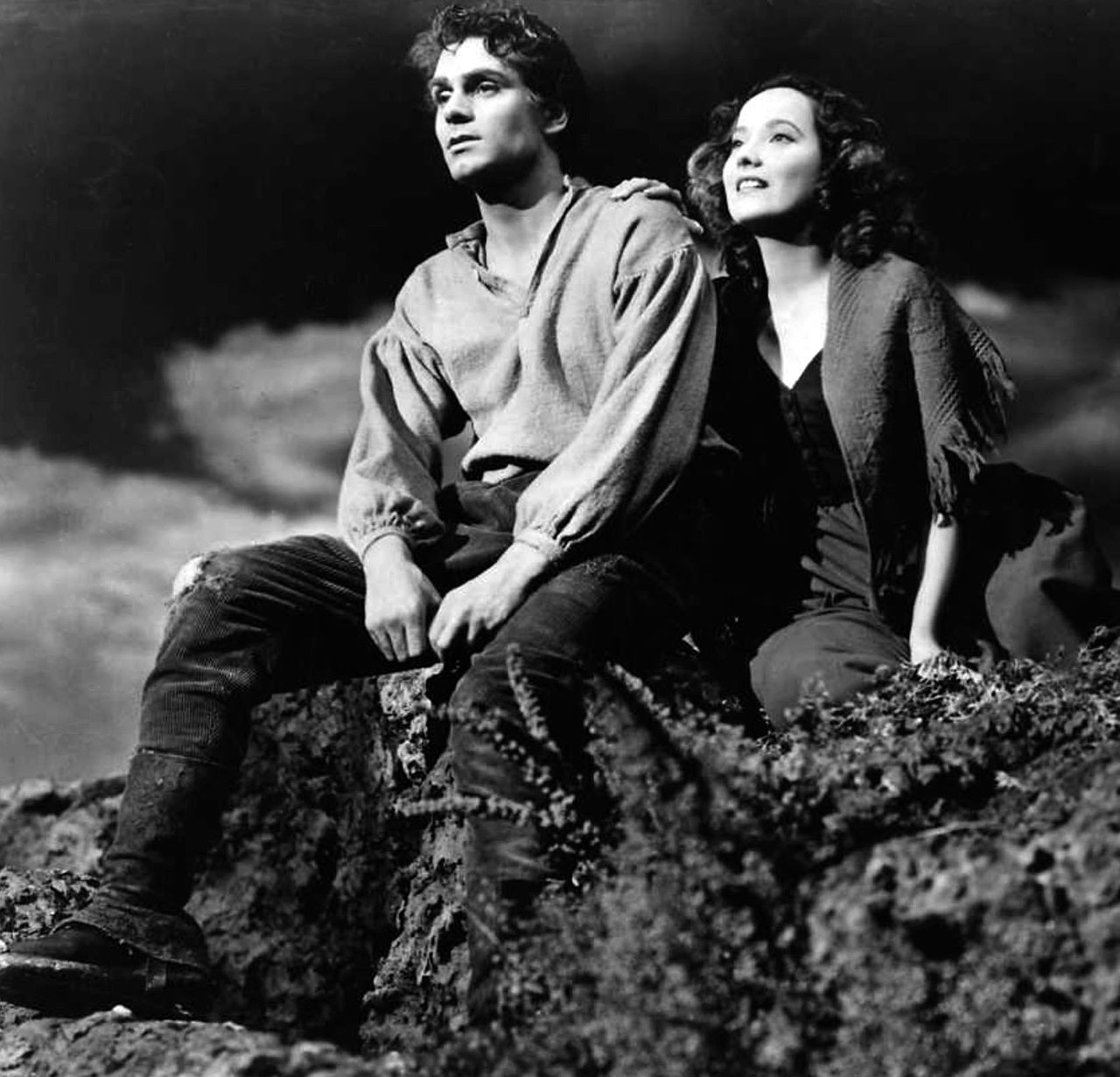
Laurence Olivier, who earned his first Oscar nomination for Wyler's Wuthering Heights, acknowledged Wyler for teaching him how to act for the screen, despite their frequent clashes. Olivier himself stated, "If any film actor is having trouble with his career, can't master the medium and, anyway, wonders whether it's worth it, let him pray to meet a man like William Wyler." Critic Frank S. Nugent praised Wyler's direction of Wuthering Heights as "magnificent," calling it "unquestionably, one of the most distinguished pictures of the year." Variety described Olivier's performance as "fantastic." Five years later, in 1944, Olivier invited Wyler to direct him in his planned film, Henry V, but Wyler declined, stating he was "not a Shakespearian." In 1950, Wyler and Olivier collaborated again on Carrie, which was not a commercial success but is considered by some critics, like Michael Billington, to contain Olivier's finest film performance.
Director and screenwriter John Huston was a close friend and early mentor to Wyler. Wyler hired Huston to work on dialogue for A House Divided (1931) after seeing his suggestions. When America entered World War II, Wyler, Huston, Anatole Litvak, and Frank Capra all enlisted simultaneously. Huston described Wyler as his "best friend in the industry," a "wonderful companion" who could play Beethoven on his violin, ride a motorcycle, or ski down steep slopes. Later in his career, Huston recalled his friendship with Wyler during an interview: "Willy was certainly my best friend in the industry.... We seemed instantly to have many things in common.... Willy liked the things that I liked. We'd go down to Mexico. We'd go up in the mountains. And we'd gamble. He was a wonderful companion....He was equally capable of playing Beethoven on his violin, speeding around town on his motorcycle, or schussing down steep virgin snow trails."
3.3. World War II service and documentaries
In 1941, Wyler directed Mrs. Miniver, a film based on the 1940 novel about a middle-class English family adjusting to the war in Europe and the bombing blitz in London. Starring Greer Garson and Walter Pidgeon, the film was controversial as it aimed to encourage the United States to abandon its isolationist stance and support Britain. Despite initial doubts from actors and some studio executives, Mrs. Miniver became the top box office hit of 1942 and won six Academy Awards, including Wyler's first for Best Director. Producer David Selznick praised Wyler's work, writing, "Dear Mad Willy. I saw Mrs. Miniver last night. It is absolutely wonderful. You repeatedly amaze me with the demonstrations of your talent and I ask you to believe that it is with genuine pleasure that I salute this latest and greatest example of your work."
President Roosevelt and British Prime Minister Winston Churchill both praised the film. Roosevelt ordered prints rushed to theaters, and the Voice of America broadcast the minister's speech from the film, which was also reprinted in magazines and dropped as leaflets over German-occupied countries. Churchill famously telegraphed Louis B. Mayer, claiming Mrs. Miniver was "propaganda worth 100 battleships." Bosley Crowther of The New York Times called it the finest film yet made about the war and "a most exalting tribute to the British." Years later, Wyler, having experienced the war himself, felt the film "only scratched the surface of war... It was incomplete."
Between 1942 and 1945, Wyler volunteered and served as a major in the United States Army Air Forces. He directed two significant documentaries during this period: The Memphis Belle: A Story of a Flying Fortress (1944), which chronicled a Boeing B-17 and its U.S. Army Air Force crew, and Thunderbolt! (1947), highlighting a P-47 fighter-bomber squadron in the Mediterranean. Wyler filmed The Memphis Belle at significant personal risk, flying over enemy territory on actual bombing missions in 1943. During one flight, he lost consciousness due to lack of oxygen. Tragically, his associate, cinematographer Harold J. Tannenbaum, a First Lieutenant, was shot down and perished during the filming. Director Steven Spielberg later described Wyler's filming of Memphis Belle in the 2017 Netflix series, Five Came Back. Before his Air Force assignment, Wyler also directed the documentary The Negro Soldier, focusing on African-Americans in the United States Armed Forces.
While working on Thunderbolt!, Wyler was exposed to such loud noise that he passed out and woke up deaf in one ear. He eventually regained partial hearing years later with the aid of a hearing aid. Wyler returned from the war as a lieutenant colonel and a disabled veteran.
3.4. Post-war success and major works (1946-1959)
Returning from the war, and unsure if he could continue directing, Wyler turned to a subject he knew intimately: the struggles of veterans. He directed The Best Years of Our Lives (1946), a film that perfectly captured the mood of a nation transitioning to peace. The story of three World War II veterans adjusting to civilian life after returning home was arguably Wyler's most personal film, drawing on his own experiences at the front. The Best Years of Our Lives won the Academy Award for Best Director (Wyler's second) and Academy Award for Best Picture, along with six other Academy Awards, including an Academy Honorary Award.
In 1949, Wyler directed The Heiress, which earned Olivia de Havilland her second Oscar for Best Actress and also won Oscars for Best Art Direction, Best Costume Design, and Best Music. De Havilland, who had seen the play in New York, convinced Wyler to acquire the film rights, and he successfully persuaded Paramount to buy them. He also secured Montgomery Clift and Ralph Richardson as co-stars for the film, which is considered a highlight of de Havilland's career.
In 1951, Wyler produced and directed Detective Story, starring Kirk Douglas and Eleanor Parker, depicting a day in the life of a detective squad. The film marked the screen debuts of Lee Grant and Joseph Wiseman and was nominated for four Academy Awards, including one for Grant. Critic Bosley Crowther praised it as "a brisk, absorbing film... with the help of a fine, responsive cast."
Carrie (1952), starring Jennifer Jones and Laurence Olivier, received two Academy Award nominations for Costume Design and Best Art Direction. However, its production was plagued by difficulties: Jones had not revealed her pregnancy, Wyler was mourning the death of his year-old son, Olivier suffered from a painful leg ailment and developed a dislike for Jones. Furthermore, Hollywood was under the influence of McCarthyism, and the studio feared distributing a film that might be deemed immoral, leading to a changed ending and cuts to make it more positive in tone.
During the immediate postwar period, Wyler directed several critically acclaimed and influential films.
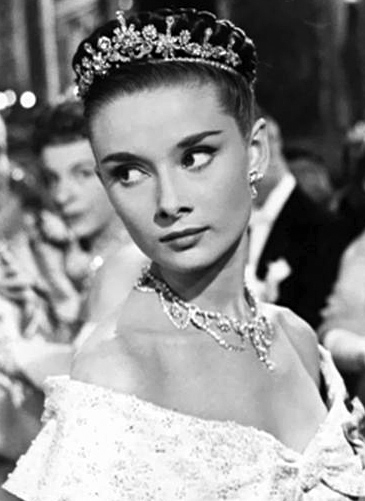
Roman Holiday (1953) introduced Audrey Hepburn to U.S. audiences in her first starring role, earning her an Academy Award for Best Actress. Wyler later remarked that truly great actresses like Hepburn were rare, comparing her to Greta Garbo and Ingrid Bergman. The film was an instant hit, also winning for Best Costume Design and Best Writing. Hepburn would collaborate with Wyler on three films, and her son considered him one of the most important directors in her career.
Friendly Persuasion (1956) was awarded the Palme d'Or (Golden Palm) at the Cannes Film Festival. In 1959, Wyler directed the epic Ben-Hur, which won a record-setting eleven Oscars, a feat only equaled by Titanic in 1997 and The Lord of the Rings: The Return of the King in 2003. Wyler had also assisted in the production of the 1925 silent film version of Ben-Hur.
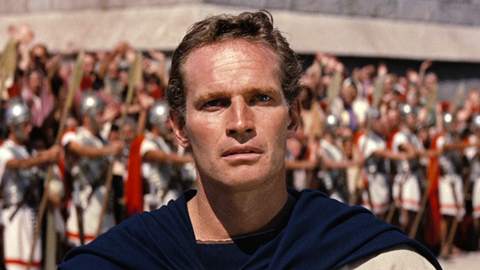
Wyler and star Charlton Heston were acutely aware of the immense financial investment MGM had in Ben-Hur, with the budget escalating from 7.00 M USD to 15.00 M USD, and MGM already facing dire financial straits. They knew that a box office failure could lead to the studio's bankruptcy. The film, like many epics, was challenging to make. Heston famously stated he "didn't enjoy any of it. It was hard work," attributing this to the immense pressure for the film to succeed. With a cast of fifteen thousand extras, a leading star, and shot on 70mm film with stereophonic tracks, it was the most expensive film ever made at that time. The iconic nine-minute chariot race alone took six months to film.
Ben-Hur became a massive box office success, earning 47.00 M USD by the end of 1961 and 90.00 M USD worldwide, with audiences flocking to theaters. Wyler won his third Academy Award for Best Director, and Charlton Heston won his first and only Academy Award as its star. Heston initially doubted taking the role, but his agent advised him, "Don't you know that actors take parts with Wyler without even reading the damn script? I'm telling you, you have to do this picture!" Kirk Douglas had lobbied Wyler for the title role, but Wyler had already chosen Heston and offered Douglas the role of Messala, which Douglas rejected, leading him to star in Spartacus (1960) instead. Critic Pauline Kael praised Wyler's achievement, stating, "I admire the artist who can make something good for the art house audience; but I also applaud the commercial heroism of a director who can steer a huge production and keep his sanity and perspective and decent human feelings beautifully intact."
3.5. Later career and final films (1960-1970)
In 1961, Wyler began directing for 20th Century Fox. He cast James Garner in The Children's Hour alongside Audrey Hepburn and Shirley MacLaine. Garner had recently won a lawsuit against Warner Bros., allowing him to leave the television series Maverick, which resulted in him being briefly graylisted in Hollywood. Wyler broke this graylist by casting Garner, who went on to play leading roles in four major motion pictures the following year.
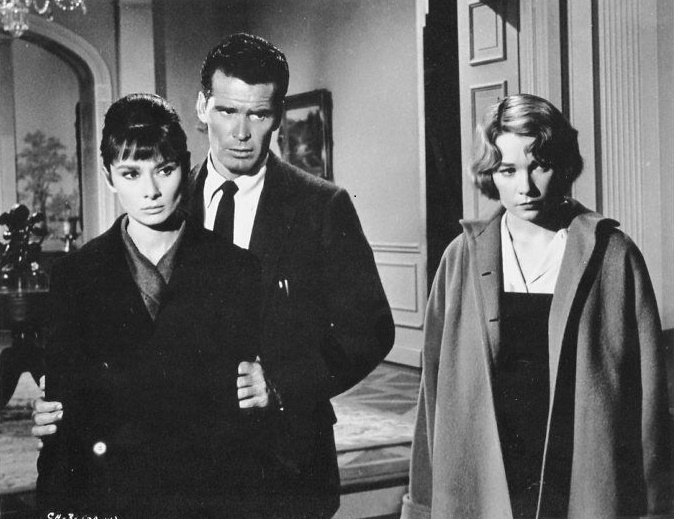
In 1968, Wyler directed Barbra Streisand in her debut film, Funny Girl, co-starring Omar Sharif. The film was a huge financial success and was nominated for eight Academy Awards. Like Audrey Hepburn in her first starring role, Streisand won the Best Actress Oscar, becoming the thirteenth actor to win an Academy Award under Wyler's direction. Streisand had already performed the role on Broadway for seven hundred performances, but Wyler still had to adapt her stage performance for the screen. Although she naturally wanted to be involved in the film's production and often asked Wyler questions, they got along well. Wyler remarked, "Things were ironed out when she discovered some of us knew what we were doing."
Wyler was drawn to Streisand for similar reasons he was drawn to Audrey Hepburn, both being new to film audiences. He met with Streisand during her musical run and was excited by the prospect of guiding another new star to an award-winning performance. He sensed that Streisand possessed the same dedication to acting as Bette Davis did early in her career, noting that it "just needed to be controlled and toned down for the movie camera." Wyler later expressed great fondness for Streisand, calling her "very professional, very good, a hard worker, too hard at times. She would work day and night if you would let her. She is absolutely tireless."
Wyler was initially hired to direct Patton (1970) but quit before production began in 1969. His final film as director was The Liberation of L.B. Jones, released in 1970.
4. Directorial style and technique
William Wyler's distinctive filmmaking techniques were characterized by a relentless pursuit of perfection, innovative visual storytelling, and an unparalleled ability to draw exceptional performances from his actors.
4.1. Perfectionism and the "40-take Wyler"
Wyler was renowned for his perfectionism, which earned him the nickname "40-take Wyler," and sometimes even "90-take Wyler" in Japan, reflecting his reputation for extensive retakes. His goal was to hone every nuance of a performance and scene until he was completely satisfied. On the set of Jezebel, Wyler famously put Henry Fonda through 40 takes of a single scene, offering only the instruction "Again!" after each attempt. When Fonda asked for more specific direction, Wyler simply responded, "It stinks." Similarly, when Charlton Heston questioned the perceived shortcomings of his performance in Ben-Hur, Wyler's succinct advice was "Be better!"
Despite the demanding nature of his methods, actors often recognized the value of his approach. Charlton Heston noted that regardless of how difficult a scene was to achieve, the final result was always excellent: "The only answer I have is that his taste is impeccable and every actor knows it. Your faith in his taste and what it will do for your performance is what makes casting a Wyler picture a cinch...doing a film for Wyler is like getting the works in a Turkish bath. You darn near drown, but you come out smelling like a rose." This meticulousness, though challenging, was seen as essential to the high quality of his films and the acclaimed performances within them.
4.2. Deep focus cinematography
Wyler was a significant proponent and innovator in the use of deep focus cinematography, a technique that allows all objects on screen, whether in the foreground or background, to remain in sharp focus simultaneously. This technique creates a strong illusion of depth, making the scene appear more realistic and immersive. He extensively collaborated with cinematographer Gregg Toland, who worked on six of Wyler's films, primarily in the 1930s and 1940s.
Their collaboration on deep focus was particularly notable in three of Wyler's most celebrated films. In Wuthering Heights (1939), Toland's use of low angles, dark shadows, and diffusion contributed to the film's atmospheric quality, earning him an Oscar for Best Cinematography. For Lillian Hellman's adaptation of her play, The Little Foxes (1941), Wyler and Toland worked closely to apply the hard-edged deep focus, similar to that seen in Citizen Kane, to portray a story of "soul-destroying family wealth." This included inventing a completely white makeup scheme for star Bette Davis to convey her character's soullessness. Most famously, Toland's work on Wyler's masterpiece, The Best Years of Our Lives (1946), showcased the power of deep focus in capturing the complex emotional landscape of returning World War II veterans. Memorable examples include a scene where three men converge at a bar, unable to stay home, and the powerful closing shot of a crowded family wedding dispersing, leaving two young lovers staring at each other across an empty living room. Wyler's active incorporation of deep focus allowed for dynamic theatrical spaces to be transformed into cinematic ones, capturing dramatic changes in lighting and character movements within a single shot, moving beyond the then-dominant montage editing style.
4.3. Directing actors
Wyler possessed an exceptional ability to elicit nuanced and award-winning performances from his actors, often propelling them to stardom and critical acclaim. He holds an unparalleled record in Hollywood history for guiding actors to Oscar success: fourteen actors won Academy Awards under his direction, and thirty-six received nominations, both being records.
Key examples of actors who achieved significant recognition under Wyler's guidance include:
- Bette Davis: She received three Oscar nominations for her work with Wyler and won her second Academy Award for her performance in his 1938 film Jezebel. Davis stated, "It was he who helped me to realize my full potential as an actress. I met my match in this exceptionally creative and talented director."
- Laurence Olivier: He received his first Oscar nomination for Wyler's Wuthering Heights (1939) and credited Wyler with teaching him how to act for the screen.
- Audrey Hepburn: Wyler discovered and directed Hepburn in her debut starring role in Roman Holiday (1953), which earned her an Academy Award for Best Actress. Wyler later praised her as a truly great actress, comparing her to Garbo and Bergman.
- Olivia de Havilland: She won her second Oscar for her performance in Wyler's The Heiress (1949).
- Greer Garson: She won her first and only Academy Award for her performance in Wyler's 1942 film Mrs. Miniver.
- Fredric March: He won the Best Actor Oscar for his role in The Best Years of Our Lives (1946).
- Charlton Heston: He won his first and only Academy Award for Best Actor in Wyler's epic Ben-Hur (1959).
- Barbra Streisand: In her debut film, Funny Girl (1968), Streisand won the Best Actress Oscar under Wyler's direction.
Wyler's three Best Picture-winning films-Mrs. Miniver, The Best Years of Our Lives, and Ben-Hur-each featured a Best Actress or Best Actor Oscar winner. Other popular Wyler films that showcased strong performances include The Westerner (1940) with Gary Cooper, Detective Story (1951) with Kirk Douglas, Friendly Persuasion (1956) with Cooper and Dorothy McGuire, The Big Country (1958) with Gregory Peck and Charlton Heston, The Children's Hour (1961) with Hepburn, Shirley MacLaine, and James Garner, and How to Steal a Million (1966) with Hepburn and Peter O'Toole.
5. Legacy and influence
William Wyler's lasting impact on the film industry is profound, cementing his status as a master craftsman whose contributions shaped narrative cinema and influenced generations of filmmakers and actors.
5.1. Impact on Hollywood
Wyler's consistent ability to transform classic literary adaptations into both critical and commercial successes made him one of Hollywood's most "bankable moviemakers" from the 1930s to the 1960s. His talent for staging, editing, and camera movement allowed him to convert dynamic theatrical spaces into cinematic ones, contributing significantly to the evolution of narrative film. He was a versatile director, tackling a wide variety of genres with artistic integrity, from dramas and Westerns to romantic comedies and historical epics.
Wyler was also known for his integrity and resistance to the Red Scare that swept Hollywood in the 1950s. When questioned by a judge about his support for or connection to communism, he reportedly challenged the judge, stating, "I will return that question to you: 'Do you support communism or are you connected to it?' If you are not obliged to answer, then I should also be allowed to refuse to answer." This stance highlights his commitment to principles over political pressure. After World War II, Wyler, along with Frank Capra and George Stevens, attempted to establish Liberty Pictures to strengthen directors' positions against major studios, though this venture ultimately did not succeed. Many of Wyler's home movies are preserved by the Academy Film Archive, which preserved a number of them in 2017.
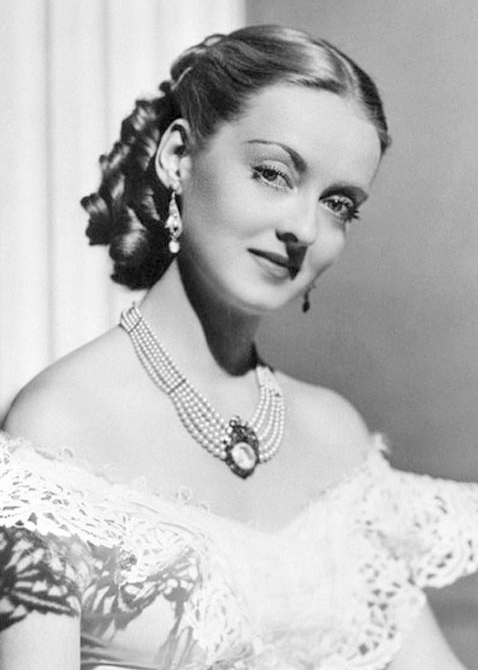
5.2. Major awards and honors
William Wyler's career was marked by an extraordinary number of awards and accolades, reflecting his consistent excellence and profound impact on cinema. He holds the record as the most nominated director in Academy Awards history, with twelve nominations for Best Director. He won the Academy Award for Best Director three times: for Mrs. Miniver (1942), The Best Years of Our Lives (1946), and Ben-Hur (1959). He is tied with Frank Capra for the second-highest number of wins in this category, behind only John Ford, who won four. Wyler is also the only director in Academy history to direct three Best Picture-winning films (the same three for which he won Best Director) and shares with Steven Spielberg the record for directing the greatest number of Best Picture nominees, with thirteen.
In 1965, Wyler was awarded the Irving G. Thalberg Memorial Award for his career achievements, a prestigious honor recognizing a producer's consistent high quality of motion picture production. Eleven years later, in 1976, he received the American Film Institute AFI Life Achievement Award, one of the highest honors in American cinema, for his lifetime contributions. For his contributions to the motion picture industry, Wyler was honored with a star on the Hollywood Walk of Fame at 1731 Vine Street on February 8, 1960. In 1961, he was chosen as one of 50 outstanding Americans of meritorious performance in their fields, honored as a Guest of Honor at the first annual Banquet of the Golden Plate by the American Academy of Achievement.
5.3. Actors' Oscar achievements
Wyler has the unparalleled distinction of having directed more actors to Oscar-nominated performances than any other director in history, with a remarkable thirty-six nominations. Out of these nominees, fourteen went on to win Academy Awards, also a record. These achievements underscore his exceptional talent for nurturing and elevating acting performances.
Notable Oscar winners under Wyler's direction include:
- Bette Davis for Jezebel (1938). Davis stated, "It was he who helped me to realize my full potential as an actress. I met my match in this exceptionally creative and talented director."
- Olivia de Havilland for The Heiress (1949).
- Audrey Hepburn in her debut film, Roman Holiday (1953).
- Charlton Heston for Ben-Hur (1959).
- Barbra Streisand in her debut film, Funny Girl (1968). Streisand publicly thanked him for directing her in her debut film.
Wyler's ability to consistently draw out award-winning performances from his cast members is a testament to his meticulous direction, his deep understanding of character, and his collaborative approach with actors, even if it involved numerous retakes.
6. Personal life
Beyond his celebrated career, William Wyler's personal life was marked by family relationships and a quiet dedication to his craft, even into his later years.
6.1. Marriages and family
Wyler was married twice. His first marriage was brief, to actress Margaret Sullavan, from November 25, 1934, to March 13, 1936, ending in divorce. On October 23, 1938, he married actress Margaret Tallichet, often known as "Talli." The couple remained together until his death in 1981. They had five children: Catherine, Judith, William Jr., Melanie, and David. His daughter, Catherine Wyler, noted in an interview that her mother played a crucial role in his career, often serving as his "gatekeeper" and reading scripts presented to him.
Wyler was fluent in German, Alsatian, French, and English. He was also a Freemason.
6.2. Later years and death
In his later years, Wyler continued to engage with his cinematic legacy. On July 24, 1981, just days before his passing, he gave an interview with his daughter, Catherine, for Directed by William Wyler, a PBS documentary about his life and career. He also visited Japan twice, once in April 1955 and again in April 1980, when he was invited to the premiere of director Akira Kurosawa's film Kagemusha.
Three days after his final interview, on July 27, 1981, William Wyler died of a heart attack at his home in Beverly Hills, California. His last words regarding cinema were reportedly focused on his next project: "Next will be... 'Going Home'." He is interred at Forest Lawn Memorial-Park in Glendale, California.
7. Filmography
The following is a list of feature films directed by William Wyler:
- Lazy Lightning (1926)
- The Stolen Ranch (1926)
- Blazing Days (1927)
- Anybody Here Seen Kelly? (1928)
- The Shakedown (1929)
- The Love Trap (1929)
- Hell's Heroes (1930)
- The Storm (1930)
- A House Divided (1931)
- Tom Brown of Culver (1932)
- Her First Mate (1933)
- Counsellor at Law (1933)
- Glamour (1934)
- The Good Fairy (1935)
- These Three (1936)
- Dodsworth (1936)
- Come and Get It (1936)
- Dead End (1937)
- Jezebel (1938)
- Wuthering Heights (1939)
- The Westerner (1940)
- The Letter (1940)
- The Little Foxes (1941)
- Mrs. Miniver (1942)
- The Memphis Belle: A Story of a Flying Fortress (1944)
- The Best Years of Our Lives (1946)
- Thunderbolt! (1947)
- The Heiress (1949)
- Detective Story (1951)
- Carrie (1952)
- Roman Holiday (1953)
- The Desperate Hours (1955)
- Friendly Persuasion (1956)
- The Big Country (1958)
- Ben-Hur (1959)
- The Children's Hour (1961)
- The Collector (1965)
- How to Steal a Million (1966)
- Funny Girl (1968)
- The Liberation of L.B. Jones (1970)
8. Major awards and nominations
William Wyler's films received extensive critical recognition, earning numerous awards and nominations throughout his career.
| Year | Title | Academy Awards | Academy Awards | BAFTA Awards | BAFTA Awards | Golden Globe Awards | Golden Globe Awards | Other Major Awards & Honors |
|---|---|---|---|---|---|---|---|---|
| 1936 | Come and Get It | 2 | 1 | |||||
| 1936 | Dodsworth | 7 | 1 | |||||
| 1937 | Dead End | 4 | ||||||
| 1938 | Jezebel | 5 | 2 | Venice Film Festival (Art Medal) | ||||
| 1939 | Wuthering Heights | 8 | 1 | New York Film Critics Circle Award for Best Film | ||||
| 1940 | The Westerner | 3 | 1 | |||||
| 1940 | The Letter | 7 | ||||||
| 1941 | The Little Foxes | 9 | ||||||
| 1942 | Mrs. Miniver | 12 | 6 | |||||
| 1946 | The Best Years of Our Lives | 8 | 7 | 1 | 1 | 2 | 2 | New York Film Critics Circle Award for Best Director, National Board of Review Award for Best Director, Bodil Award for Best American Film |
| 1949 | The Heiress | 8 | 4 | 3 | 1 | |||
| 1951 | Detective Story | 4 | 3 | Directors Guild of America Award for Outstanding Directing - Feature Film (Nominated) | ||||
| 1952 | Carrie | 2 | 2 | |||||
| 1953 | Roman Holiday | 10 | 3 | 4 | 1 | 1 | 1 | Directors Guild of America Award for Outstanding Directing - Feature Film (Nominated) |
| 1955 | The Desperate Hours | National Board of Review Award for Best Director | ||||||
| 1956 | Friendly Persuasion | Palme d'Or (Cannes Film Festival), Directors Guild of America Award for Outstanding Directing - Feature Film (Nominated) | ||||||
| 1958 | The Big Country | 2 | 1 | 1 | 1 | 1 | Directors Guild of America Award for Outstanding Directing - Feature Film (Nominated), Kinema Junpo Award for Best Foreign Film Director | |
| 1959 | Ben-Hur | 12 | 11 | 1 | 1 | 4 | 3 | Directors Guild of America Award for Outstanding Directing - Feature Film, Golden Globe Award for Best Director, New York Film Critics Circle Award for Best Film |
| 1961 | The Children's Hour | 5 | 3 | Directors Guild of America Award for Outstanding Directing - Feature Film (Nominated) | ||||
| 1965 | The Collector | 3 | 4 | 1 | Directors Guild of America Lifetime Achievement Award | |||
| 1968 | Funny Girl | 8 | 1 | 3 | 4 | 1 | Directors Guild of America Award for Outstanding Directing - Feature Film (Nominated) | |
| 1970 | The Liberation of L.B. Jones | 1 | ||||||
| Total | 112 | 38 | 12 | 9 | 20 | 10 | ||